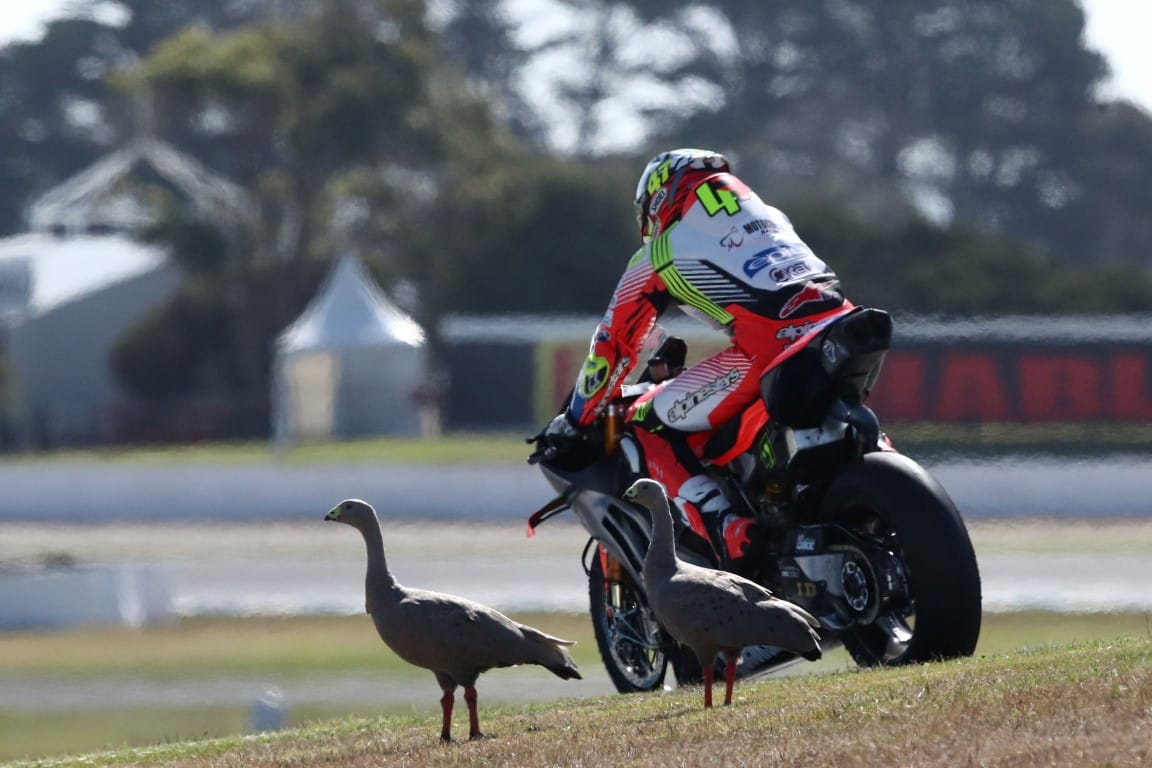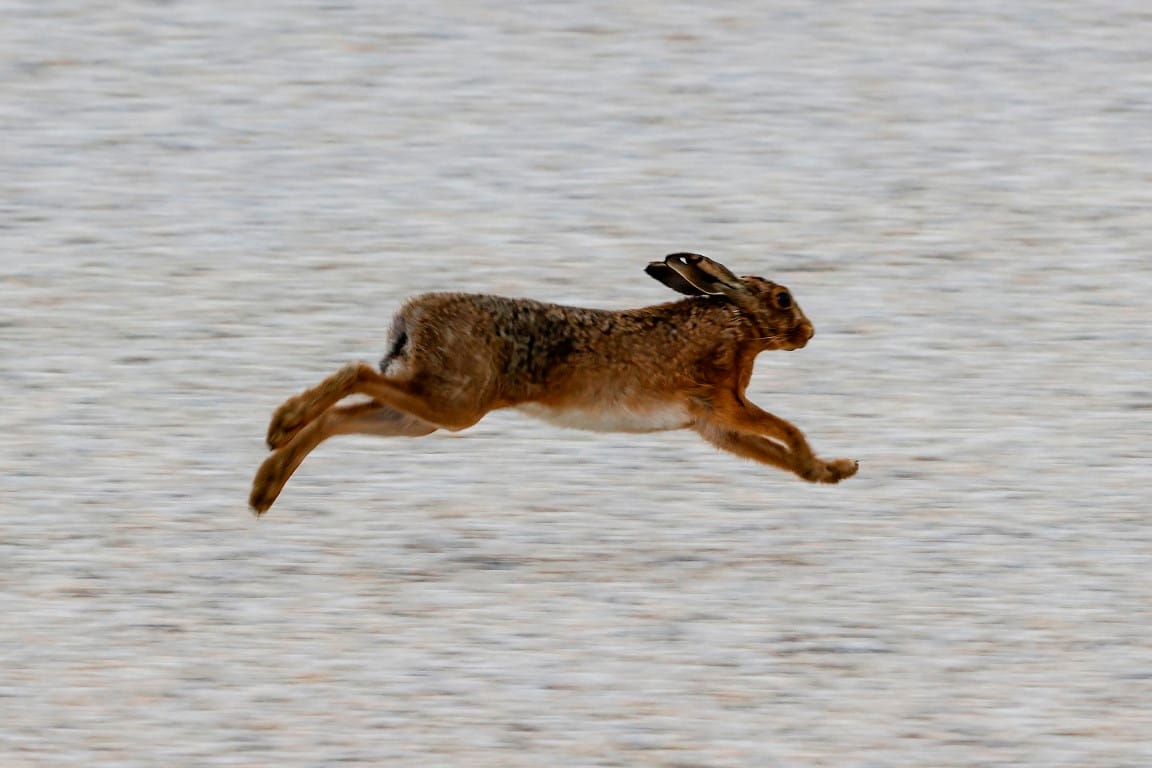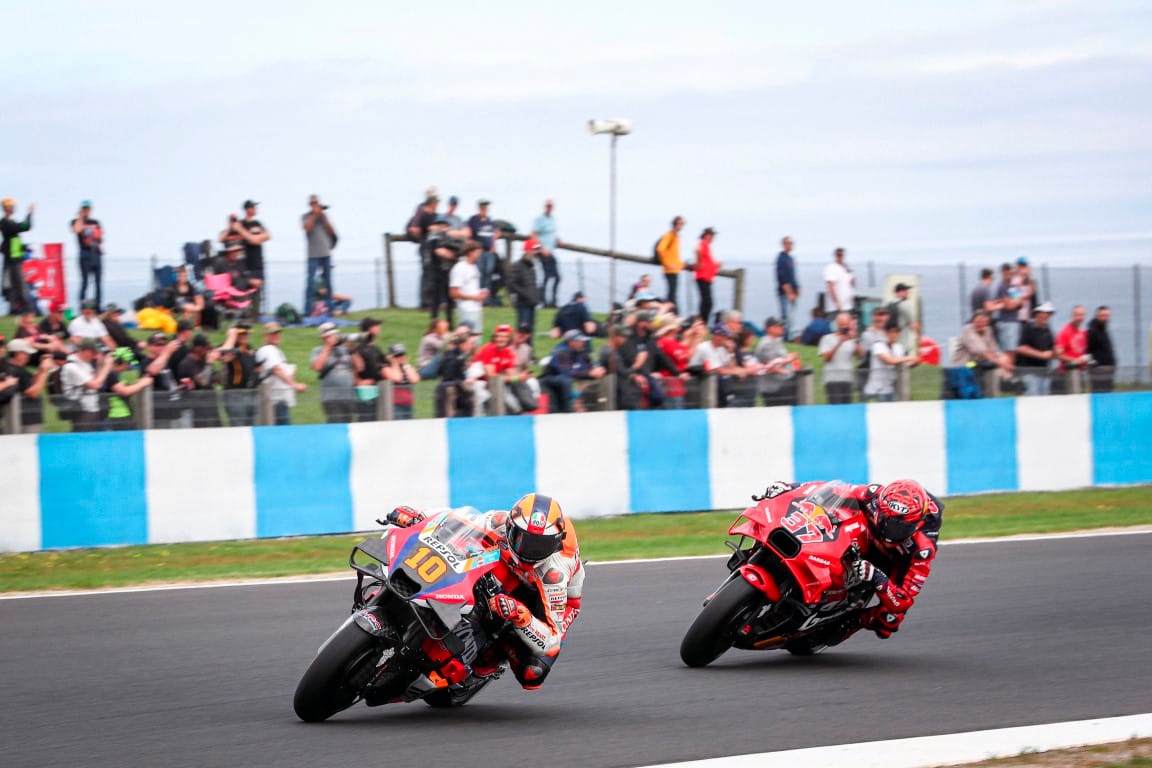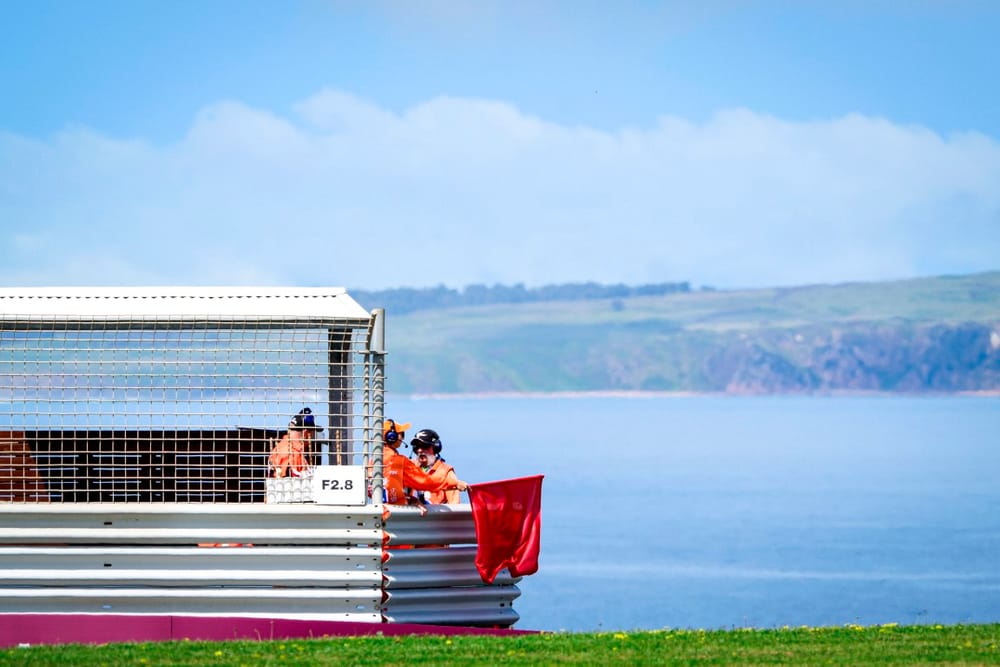Practice for the Australian Grand Prix at Phillip Island has once again been impacted by local wildlife, with both Moto2 and MotoGP sessions on Friday afternoon seeing the red flags come out due to Cape Barren geese on the circuit.
And, for a world championship event in a 2024 campaign approaching title fight crunch time, that’s simply not good enough.
The protected goose species weren’t the only track invaders during the day, though, with championship leader Jorge Martin also having a lucky escape when a hare darted across the track in front of him during the final minutes of the afternoon’s only MotoGP session following heavy rain in the morning.
A proper sc(h)are 🐇 for @88jorgemartin in Practice 😱#AustralianGP 🇦🇺 pic.twitter.com/BYoF6EMTJv
— MotoGP™🏁 (@MotoGP) October 18, 2024
Obviously no one wants to see any harm come to animals in the surrounding area and while the championship has been lucky so far to avoid serious incidents, it presents two pressing issues for MotoGP.

Firstly, and perhaps most obviously and pertinently, there is the matter of the risk posed to a racer should they hit one of the animals that ventures onto the track, a situation that has tragically resulted in fatalities at other races in the past.
The potential for wildlife-related catastrophe is naturally heightened should a motorcycle or its rider travelling at 200mph collide with not a seagull, like Ducati's Andrea Iannone famously did in the 2015 event, but a heavier bird weighing five kilograms instead.
More likely though, is the possibility for red flags to interfere with the championship battle should a race, for example, need to be brought to a premature halt - something that Pramac Ducati racer Martin admitted that he’s considered.
Goose on the loose 🙃#AustralianGP 🇦🇺 pic.twitter.com/BbbJhVGz4V
— MotoGP™🏁 (@MotoGP) October 18, 2024
"For sure a lot of wildlife over here in Phillip Island,” he said after his hare encounter.
“This will be interesting also on Sunday, or tomorrow. If we have some animals at the end of the race, maybe it stops, so it's important to be always in a good position [in case a red flag declares the result]."

It’s something that’s been raised repeatedly by riders in their weekly safety commission meetings, too - but to no avail, according to a rather cynical Aleix Espargaro.
"For me it's really difficult to understand that this is happening,” he admitted when asked about it by The Race.
“It's mind-blowing, really. I don't know how it's possible that it's still happening here. But it's year after year. Hopefully, nothing heavy will happen. Hopefully."
Well, traditions 😂
— MotoGP™🏁 (@MotoGP) October 18, 2024
These birds DO LOVE #Moto2 and they've just caused a red flag 🔴#AustralianGP 🇦🇺 pic.twitter.com/jj6Yp3zgkI
And while there are certainly challenges presented by trying to police the behaviour of the protected birds in particular, it’s hardly a completely new challenge given that it’s one faced daily (and managed successfully) by airports across the globe.
They regularly employ chase vehicles, noisemakers and specially-trained staff equipped with blank-firing guns to scare birds away, meaning that solutions to the issue do exist while still fitting within animal protection laws.
Speaking to The Race 12 months ago, one suggestion pitched by ecologist Professor Rob Wallis was the use of trained birds of prey, a move that has been successfully used at other sporting events in Australia.
New surface bumpy but acceptable

The legendary Australian venue underwent a first resurfacing in a decade in the off-season, which was expected to play a major role this weekend - especially in the context of riders getting limited dry-weather running to acclimatise to the new surface.
But while it remains to be seen how exactly a race distance will play out on a repaved Phillip Island, and whether tyre supplier Michelin will force the use of certain tyres, the initial reaction from riders suggested they haven't felt a massive change.
"For me, the new asphalt is like if there is no new asphalt," said Espargaro. "The track is like last year.
"A little bit better grip but the bumps [are] still there, if not worse in some places. So I didn't feel really like a new asphalt. Not really."
That comment - slightly improved grip, slightly worse bumps - was echoed up and down the grid, without much of a furore.
Honda rider Luca Marini said of the bumps: "There were bumps also before - but now, in the new Tarmac, same bumps and even more bumps in other places. Turn 1 is a disaster, Turn 2 also difficult, and there are some patches with a different kind of Tarmac on the ground, I don't know why, between 11 and 12, that cause a little bit of problems.
"But I think they made a decent job with this new Tarmac, we cannot complain so much. Bumps are part of the characteristic of a track."



